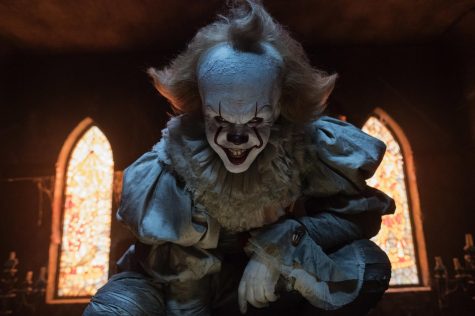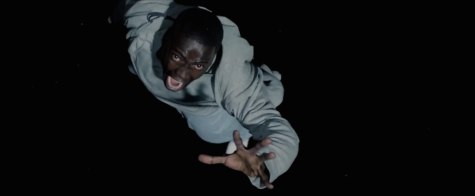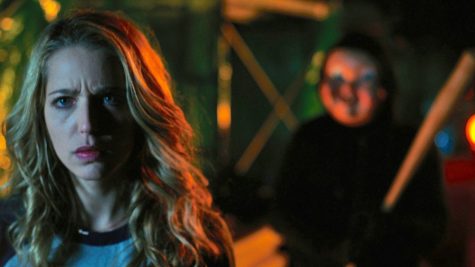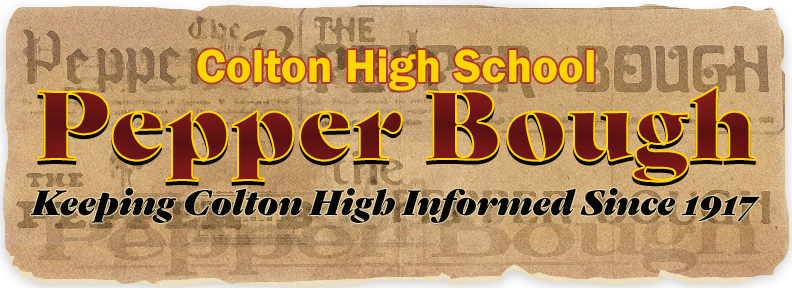The Best Years of Horror: 2017
The voices of the marginalized find their audience in 2017, the year of children in peril, a black man’s terror in a white world, and a girl who finds herself reliving the worst birthday over and over
2017 was a year dominated by fresh voices in horror, including “It,” “Get Out,” and “Happy Death Day.”
2017 was a year in horror that saw the highest grossing film, the first big studio minority centric film, and a queer directed horror movie.
This year in horror upheaval saw many great things like creatures featured, found footage, and psychological horror.
It (2017, dir. Andy Muschetti)

Audience members fought for seats to pack theaters in excitement for the return of their beloved clown, Pennywise. “It: Chapter 1” focuses on the first half of the 1986 Stephen King novel that holds the hearts of nearly all die-hard horror fans.
“It” follows a group of “losers” in the fictional city of Derry as they first encounter an evil clown that had been abducting children and holding them for its own purposes deep in the bowels of the city.
Most fans were excited about the new take on the villain, first portrayed on small screens in the 1990 ABC TV mini-series by Tim Curry. Despite only a small amount of screen time, Curry’s performance set a high mark for fans of the story, which made most eager to see what relative newcomer Bill Skarsgård would do with the role.
They needn’t have worried. Skarsgård’s take on Pennywise the Dancing Clown is nearly alien. He drools when confronted with his food, his eyes focused on sucking up all their fear. And while the clown is essential to his appearance, the monster takes on many forms in this film, from a creepy librarian to a blister-covered leper that hangs around the dessicated house on Neibolt Street.
But what “It” got truly right, and what sets it apart from most other films of its ilk is that it made a villain of Derry itself. There are no soft corners in this industrial town. Neighbors watch poor Georgie Denbrough’s bloody body dragged into the gutter and do nothing. They witness Ben Hanscomb nearly get stabbed to death by the sadistic Henry Bowers and his gang, and do nothing. And even those with the power to intervene, from Bowers’ police officer father, to the local pharmacist, all prove to be monsters of a different variety.
“It: Chapter 1” is a very well put together film that is genuinely terrifying.
Get Out (2017, dir. Jordan Peele)

Jordan Poole was a comedian. And it was debatable just how good he was, with lots of criticism levied against his show “Key & Peele” as being a second rate copy of the “Dave Chapelle Show.” Peele had the good graces of the Hollywood studio system, though, and he used that to show his true calling as a horror filmmaker of the first rate.
“Get Out” was his offering, and it was more than just a groundbreaking take on psychological horror in the vein of “Rosemary’s Baby” and “The Stepford Wives.” It put the black experience front and center as our main character, Chris (Daniel Kaluuya), heads out to the country to meet his white girlfriend’s family.
At first everything seems fine, with minor put offs and microaggressions putting Chris on edge (“I would have voted for Obama for a third term if I could.”; “Well, I can’t quite swing my hips like I used to, though. But, I do know Tiger!”) until he starts putting the pieces together.
And then there’s the Sunken Place. Few horror movies have ever found the perfect metaphor to depict the feeling of being trapped in your body the way Peele does with the creation of this terrifying idea. What comes next is a mad scientist movie that uses its horrors as a way to look at the roots of American racism.
In 2017, there was a call to start hiring more minority voices to create movies to share their perspectives and stories. “Get Out” became a trailblazer, opening the doors to many other filmmakers of color. And Peele seems to understand that, using his newfound power within the film industry to support new and diverse voices.
Happy Death Day (2017, dir. Christopher Landon)

On its surface, “Happy Death Day” is comedy-horror take on the classic Bill Murray movie “Groundhog Day,” joining sci-fi efforts like “Edge of Tomorrow” and slacker comedies like “Palm Springs” as one of the great riffs on the concept.
The movie is about a college student named Tree (Jessica Rothe) who we meet on her birthday, waking up in a stranger’s dorm room. She hates her birthday, all the dealing with friends, boyfriend, and family issues. Then the unthinkable happens! She is murdered by a stranger in a babyface mask.
But the strangest part is that she wakes up the next morning in the same stranger’s dorm, ready to repeat the day over and over until she can figure out who the babyface killer is.
Christopher Landon knows this premise is silly. He’s fully aware of how ridiculous the babyface mask is. And how slasher movies in general are basically repetitive creature features. So, he removes the pretense of the stupid teenager by giving us a character we can watch grow under the stress of impending death (and probable dismemberment). She’s mean sorority girl who transforms into a confident final girl.
And Landon, who has never been quiet about his homosexuality, uses this story to create the fabric of an LGBTQ horror film as Tree’s repetitious journey enables her to begin seeing the people around her as people, many of whom are queer in some form or another. While Tree herself is straight, her journey is one towards becoming an ally for all those preyed upon. It’s a huge step towards the queer horror Landon would embrace in his next film, the body swap horror of “Freaky” with Vince Vaughn and Kathryn Newton.
Perspective is important in all film, but especially in horror, and getting the perspective of the voiceless, whether they be children, black men, or women, and LGBTQ individuals, made 2017 one of the greatest years for horror cinema.
Recently, the CHS Publications Department experienced a major theft as over $20,000 in photography equipment was stolen from our studio over Spring Break. This included all cameras. Any amount you donate will help rebuild our program. Thank you!

Rin Salas is a sophomore at Colton High, interested in horror movies and kids TV shows. They go by he/they pronouns.




